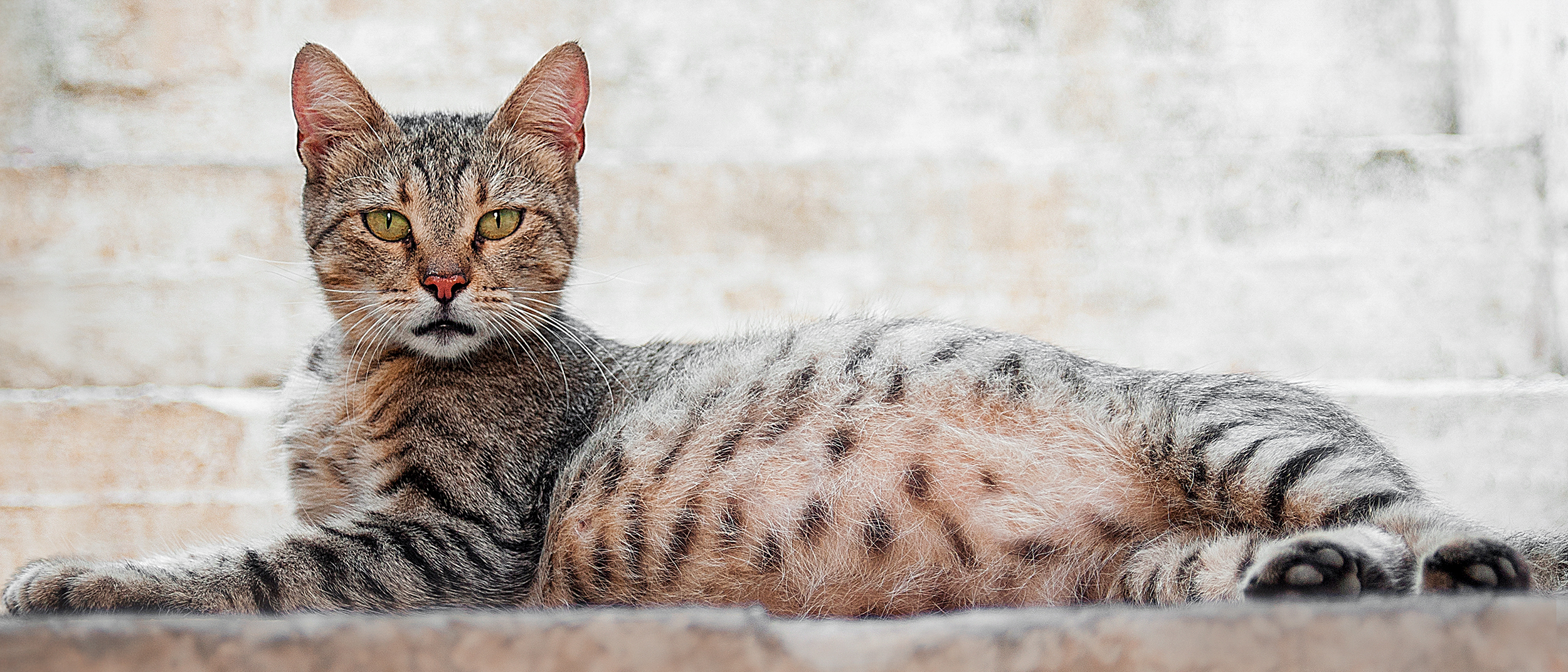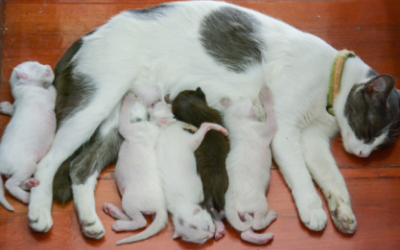To the untrained eye, cat mating seems to be simple: they mate noisily, often, and indiscriminately; the female cat gets pregnant, and eventually gives birth to a litter of kittens. However, the reality isn’t nearly as simple as that. Did you know, for example, that cats do not ovulate until they mate? Or the fact that a mother cat may have five kittens, each from a different father? T that all male cats have barbed penises to encourage female cats to ovulate?
Learn the truth about these topics and much more about cat mating in this article.

Cat Mating and Conception
You may have acquired or been given a female kitten, and her behaviour has suddenly turned strangely “amorous” now that she is a few months old. You’re thinking to yourself, “Could she be in heat already?” Yes, you’ve heard of spaying, but you haven’t done it yet. Perhaps you’re secretly fantasising about having a litter of kittens—just one.
You adore her, but you’re also concerned about her ability to get pregnant at her age. What would happen if she slipped out the door and ran across a rambunctious male cat with just one goal in mind?

Is Your Cat in Heat?
Female cats that haven’t been spayed will ultimately go into heat (officially known as oestrus), and the symptoms are easy to see if you know what to look for. A kitten’s first heat may occur as early as 3 1/2 months, so don’t believe the traditional recommendation to wait until six months to spay. 1 Remember that after a female cat has her first heat, she will continue to have heats until she mates or is spayed. If you think your cat is in heat, keep an eye out for the following behavioural signs. Watch this YouTube video for a detailed description of a young cat in heat.
Symptoms That Your Cat Is Pregnant
Male cats have been known to rip down screens to get to a female in heat, while female cats will go to any extent to locate male cats to mate with. If your cat was in heat and had access to an unneutered male cat, the chances of her being pregnant are high.
A pregnant queen will undergo physical and psychological changes that will manifest themselves three weeks after mating. Recognize the indications that your cat may be pregnant.

So Your Cat Is Pregnant?
So you waited a bit too long to get her spayed, and now your cat is pregnant, or a pregnant stray has adopted you. Perhaps you work for a rescue organisation and this is your first time fostering a pregnant cat. What are your options now? The first big choice you’ll have to make is whether or not to keep the condition going.
Yes, pregnant cats may be spayed, but the sooner in the pregnancy that they are spayed, the better.
However, you should consult with your family and your veterinarian before making this choice.
Pregnancy Stages in a Cat
The embryo’s whole growth is a fascinating subject with scientific names for each step, but for the sake of simplicity and clarity, we’ll stick to the fundamentals here. It’s worth noting that understanding the development process is more essential than memorising the names used along the route.
Care of Your Cat During Pregnancy
Whether you’ve adopted a pregnant stray or your own cat has gotten pregnant, you’ll want to make sure your pregnant cat gets all she needs for her own health as well as the health of her unborn kittens. Except for dietary concerns, which are particularly important for a stray pregnant cat, most of the items you’ll offer for her will be the same as you would for any other cat in your care: shelter, a place to sleep, litter box, scratching post, and toys. (Exercise is also beneficial to pregnant cats.)
Potential Problems in Cats’ Pregnancy
Any odd symptoms during pregnancy should be followed up with a phone call or a visit to your veterinarian in general. This is an essential aspect of a pregnant cat’s care.
Although many pregnant cats have a trouble-free pregnancy, there are certain issues that may arise. It is better to be forewarned than to be forearmed.

Assisting Your Cat During the Birthing Process
You may not need to do anything to assist with the delivery process other than being there with your cat to support her—sort of like a “cat doula.” You may even wake up one morning to find that your pregnant cat has given birth and is feeding her babies happily. However, you should be aware of how to detect possible issues and what to do if she need help throughout the birthing process.
Postnatal Care of Mother Cat and Newborns
For your mother cat and her newborn kittens, the first two to three weeks are critical. The kittens should be growing quickly at this point, and the queen should be showing signs of any postpartum difficulties.
Keep the queen and her children in a peaceful area of the home, preferably a separate room, and make sure it is warm enough. One of the most serious hazards to newborn kittens is chilling. 3 Allow the mother cat to set the tone for your focus. She may appreciate your visits if she has been a long-time companion and resident.

Finding Homes for the Kittens
Depending on how you manage the preparations, sending kittens away to a new “forever home” may be either a joyful or a stressful experience. You’ve spent almost two months or more caring for the mother cat and subsequently the kittens, which has taken a lot of time, effort, and money. Their futures will be determined by your willingness to devote a little extra time to ensure that the new houses to which they will be moving are really excellent homes.
If the mother cat hasn’t already been spayed, the only thing left to do is have her spayed. You were in charge of her care throughout her pregnancy, and I’m sure you’ll agree that this is the only thing you can do now.


















